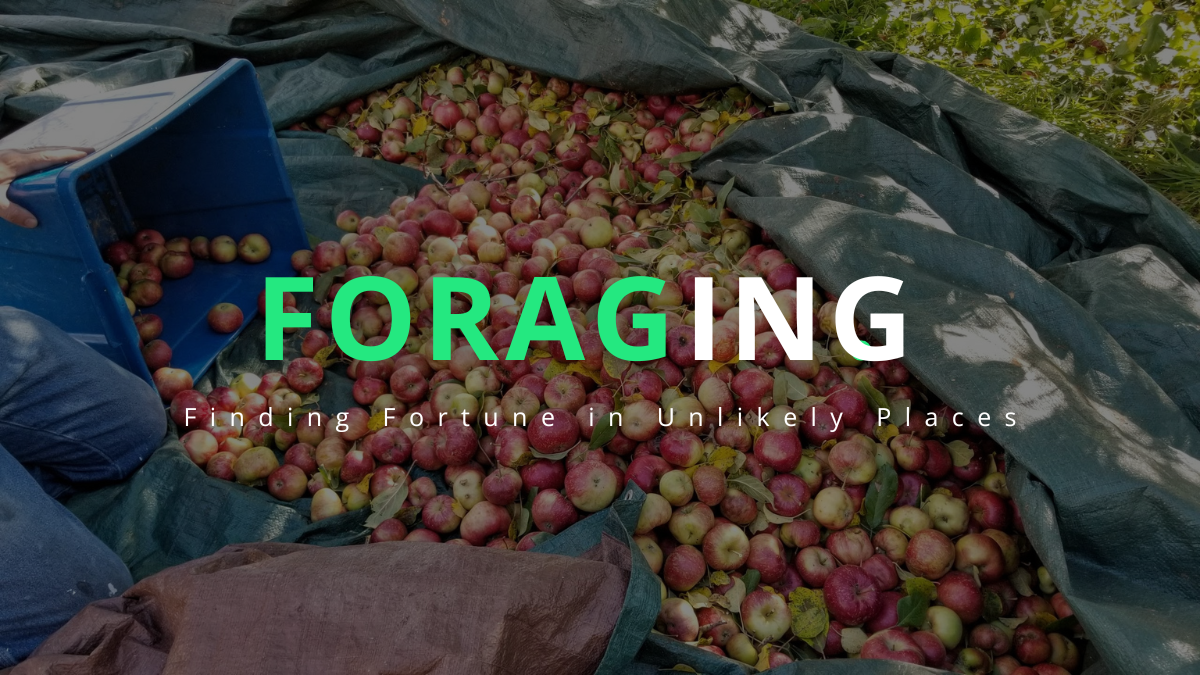Who says the essence of cider has to come from an orchard? Some cideries make the beverage from wild fruits and spices harvested from woods, farms and backyards. Here are two cideries that are rethinking what ingredients belong in cider and, perhaps more importantly, where you can source those ingredients.
“One of the most interesting things is pear cider,” says Jeff Zeitler of Urban Forage Winery & Cider House in Minneapolis. “People don’t think pears can grow in Minnesota but we have more than we can use.” Urban Forage gets its fruit mainly by picking it from local landowners (with their permission) plus some donations. For example, its Summer Crisp pear cider is made from a small green and pink pear that was developed at a state university, but was too hard to eat.
Urban forage also rummages the land for everything from rhubarb to grapes and plums. “Customers ask where we get our fruit. We tell them our orchard is the entire Twin Cities area,” Zeitler explains.
“People have even offered to pay me to take their stuff away. I don’t do that because it becomes a landscaping service,” Zeitler says. Some people with pear trees want to get rid of the stuff when it ripens to avoid a “yellow jacket party” — not what people want in their backyards. But Urban Forage only uses fruit picked from trees or shaken onto a tarp, as anything already on the ground is likely to be moldy and winds up in the compost pile. “You don’t know how long it has been on the ground or what it has been in contact with,” he says.
Zeitler notes that a lot of imperfectly shaped fruit “is not pretty but it is good for cider.” Donors feel good about it because they know it is not going to waste. Urban Forage will reward those who show up with a bushel or more of useful fruit with a bottle of cider.
Over on the East Coast, Iulian Fortu runs Arcadia Venture, a business that provides foraged vegetables, fruits, flowers and spices to restaurants and individuals. He provides various comestibles regularly to many businesses in the Washington, D.C., area, including ANXO, a cidery and restaurant that makes everything from beverages to pizza with wild ingredients. ANXO even sells some of Fortu’s foraged goods at the cidery.
In addition to providing foraged goods to cideries like ANXO, Fortu also makes his own cider. “This past spring, I made a cider with gold rush apples, strawberries and pineappleweed [a type of wild chamomile],” says Fortu. “Last year, I provided aronia berries [to ANXO] for a rosé cider called Eric the Red. Aronia berries, in the same family as apples, are native to the eastern United States. Soon, I will be using pawpaws, persimmons and even mushrooms in cider.”
He is also using small red spicebush berries that taste like black pepper. “If you want to spice cider and don’t want cinnamon or basic spices, spicebush gives a different flavor.”
Fortu has to move all around Maryland and Virginia to find produce in parks and neighborhoods. “There are no large tracts of forest land or public land,” he says. “I keep track of what grows where and what time.”
To keep safe, ”I don’t pick stuff up from the side of the highway or the middle of the city,” he says. “I go to areas in the countryside where there are no risks of pollution unless there is a toxic spill or something.”






